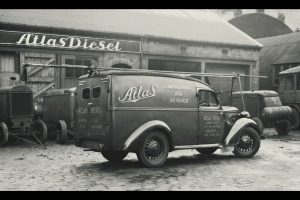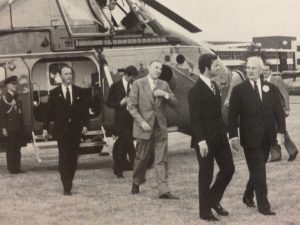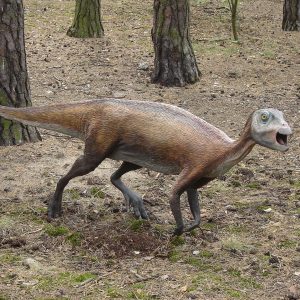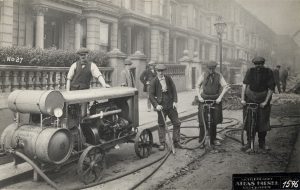100 years and counting: Some things you didn’t know about Atlas Copco as it builds up to its centenary
This year, Atlas Copco celebrates its centenary of operations in the UK. So, a few background facts may help you put this historic event into perspective.
First a bit of history for you. It all started a hundred years ago when, shortly after WW1 ended, a Swedish diesel engine manufacturer, Atlas Diesel, set up a sales office in London to sell Atlas Polar Diesel Engines.  It was the company’s first market venture outside of Scandinavia. Actually, it should have been the second. The original plans were to launch in Russia, but Lenin and his fellow revolutionaries put paid to that idea!
It was the company’s first market venture outside of Scandinavia. Actually, it should have been the second. The original plans were to launch in Russia, but Lenin and his fellow revolutionaries put paid to that idea!
Back in Sweden, the parent operation, which from the late 1800’s had progressed from producing railway carriages, steam engines, boilers and then diesel engines, had also developed its own piston air compressor and pneumatic tools. During the 1920’s and 30’s, Atlas Copco gained a foothold in the UK through its supply of this vital equipment to the country’s shipbuilding, construction and other heavy industries.
Rather than shipping them from Sweden, it made economic sense to manufacture locally, especially when the outbreak of war threatened to cut supply lines. So, in 1939 the company’s first purpose-built factory in the UK was opened in Stonebridge Park, North London, followed by another in Glasgow, producing diesel compressors and parts that played a vital role in the country’s construction of defence fortifications and airfields.
During the Blitz, the London factory had a lucky escape when a bomb fell next door. The building not only survived but was extended two years later to manufacture paving breakers which, with the compressors, played a large part in the UK’s post-war re-construction boom.
From then on there followed a series of milestones and world firsts. For instance, in 1955 the first rotary screw compressor was delivered to a mine in Sweden. A year later, the company acquired a Belgian compressor company Arpic Engineering NV and became Atlas Copco.
You may ask, where does the ‘Copco’ bit come from? Well, it’s an abbreviation of the words Compagnie Pneumatique Commerciale. In the words of Michael Caine, not many people know that!
Benefiting from the post-war industrial and construction boom, Atlas Copco closed its London and Glasgow plants and amalgamated production at a site in the new town of Hemel Hempstead in 1959. However, by 1972 it had outgrown the facility, so transferred operations within the town to its present, purpose-built site, which incorporates HQ and sales offices, engineering work
shops, spacious warehousing and its compressor technique service centre. Three years later, the staff, the locals and, in fact, the whole town were suitably impressed by a flying visit to the company from the King of Sweden landing outside in a helicopter.
Meanwhile, the company introduced a string of revolutionary product innovations which went on to have a major impact on energy efficiency in the industrial world. These include in 1967 the world’s first oil-free, rotary screw, stationary compressor; in 1990 the Tensor range of electric tools; in 1994 the very first compressor with integrated variable speed drive as well as the GTG turbine grinder, and the VSD+ compressor in 2013.
In 2014 Atlas Copco acquired UK-based Edwards Group Ltd, a technology and market leader in sophisticated vacuum products and abatement solutions. By coincidence, Edwards also celebrates its centenary in 2019.
Just a few more facts for you that are unlikely to be common knowledge: Atlas Copco in the UK played a major role in the raising and preservation of the wreck of King Henry VIII’s flagship, The Mary Rose, now part of a dedicated museum in Portsmouth. In another public exhibit, London’s Natural History Museum, an Atlas Copco compressor provided air to animate the lifelike T Rex dinosaur model, which is a fitting tribute to the only industrial company we can think of that has had a new species of dinosaur named after it. Skeleton fragments of the Atlascopcosaurus were excavated in 1984 in Australia with the help of Atlas Copco equipment.
Finally, in 2008 the company’s Construction and Mining business won one of the country’s most prestigious awards for business performance, The Queen’s Award for Industry w hich recognises innovative design leading to commercial success. That about says it all. However, who knows what else Atlas Copco will have achieved when it celebrates its next hundred years of progress?
hich recognises innovative design leading to commercial success. That about says it all. However, who knows what else Atlas Copco will have achieved when it celebrates its next hundred years of progress?
Contact us below.


